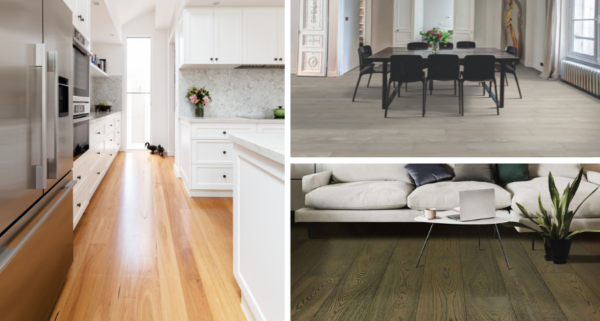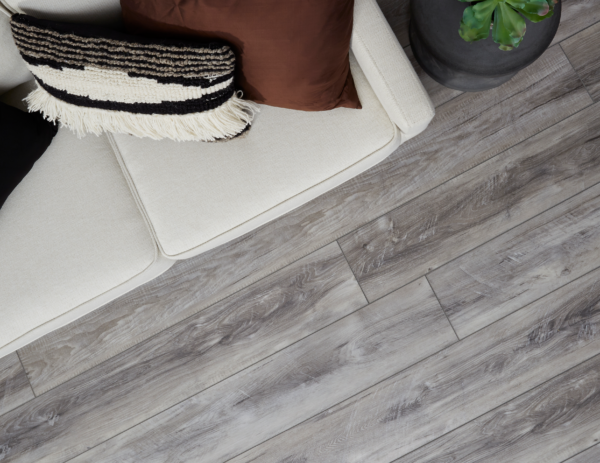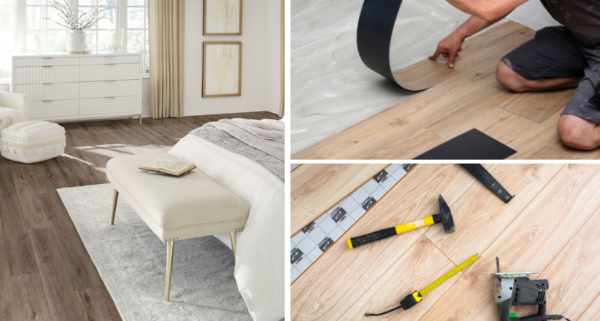Invented more than 100 years ago, vinyl flooring was originally created to replace linoleum, the original resilient flooring. Vinyl became a popular choice for areas like kitchens and bathrooms where resilience, durability and water-resistance are extremely important. Although vinyl is not completely impervious, it is very resistant to water and it is easy to clean and maintain, making it a low cost, low hassle flooring option.
Vinyl Flooring Composition
The game changer for vinyl was the introduction of PVC (poly-vinyl chloride). PVC is a synthetic plastic containing carbon, hydrogen and chlorine. Traditional sheet vinyl or vinyl tiles are composite products. They have a layer of PVC bonded to a fibrous core and are covered with a printed design layer as well as a tough, clear wear layer. The difference between a high-quality and low-quality vinyl is the thickness of the product and toughness of the wear layer.
With sheet vinyl, vinyl tile and luxury vinyl, there are a number of advantages:
- Durability: Vinyl is a very tough material, while still feeling soft underfoot.
- Water Resistance: Vinyl is resistant to moisture, steam and humidity, making it a popular choice for bathrooms, kitchens and laundry rooms. Although, it is slightly vulnerable at the seams, water is unable to penetrate the surface and do damage to the subfloor.
- Easy Maintenance: Vinyl is a breeze to clean. It resists dirt, stains, scratches and punctures. However, be aware that heavy furniture without proper padding can pierce vinyl flooring. Also, although some high-quality vinyl has UV protection, some may yellow slightly if exposed to direct sunlight. As well avoid area rugs with a rubber backing as this may cause a chemical reaction and stain your vinyl.
Common Types of Vinyl Flooring
Luxury Vinyl
Luxury vinyl can be referred to as luxury vinyl tile (LVT) or luxury vinyl planks (LVP). The make up of luxury vinyl is a limestone-based material mixed with PVC composites. It is a solid material throughout as there is no felt or fibre layer. Luxury vinyl is more rigid compared to sheet vinyl or vinyl tile however it is still somewhat flexible. On top of the composite material is a digital graphic film layer, which is then covered by a very tough wear layer. Just about any look and texture can be created thanks to new printing technology. In fact, the graphic process is far superior to sheet vinyl or vinyl tile. Luxury vinyl flooring can be remarkably realistic in mimicking wood, stone, ceramic or even metal.
Luxury vinyl can be found in a number of forms, such as square tiles or long planks that resemble laminate or wood flooring planks. It is also installed with a modified tongue and groove system so individual tiles or planks “click” together; a feature that helps make installation easier.
Although, it is the most expensive type of vinyl, with its durability, easy maintenance, and superior appearance, it is the most cost-effective flooring choice over the long term. Luxury vinyl is also impervious to water, making it a better choice for the areas in the home that are exposed to water, like bathrooms and kitchens.
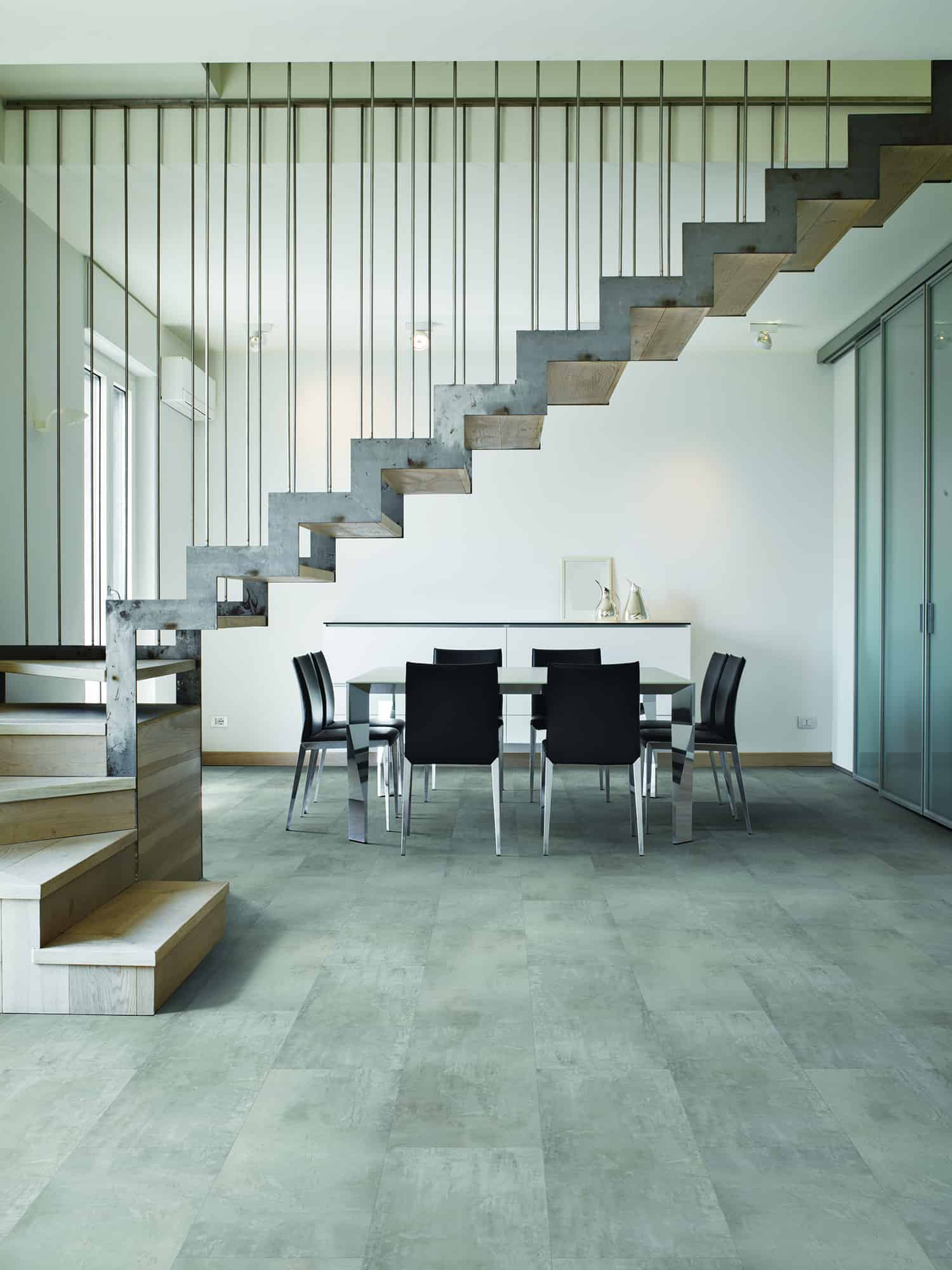
Sheet Vinyl
Sheet vinyl is a continuous sheet of polymer materials and comes in widths of 6 to 16 feet. The pattern and colour of the sheet vinyl is manufactured with a digital graphic, which is a film layer of PVC. Then it is bonded to a base layer of felt or fibrous material. To protect the PVC layer, there is a protective outerwear layer on top.
With sheet vinyl there are very few seams because it comes in large rolls, meaning it is much better at resisting water. In small rooms there may be no seam at all.
Sheet vinyl can be installed either with a full glue down application, this bonds it at the perimeter. You can also have it “floating” over the underlayment. It is not recommended to try and install sheet vinyl yourself as it can be an awkward process.
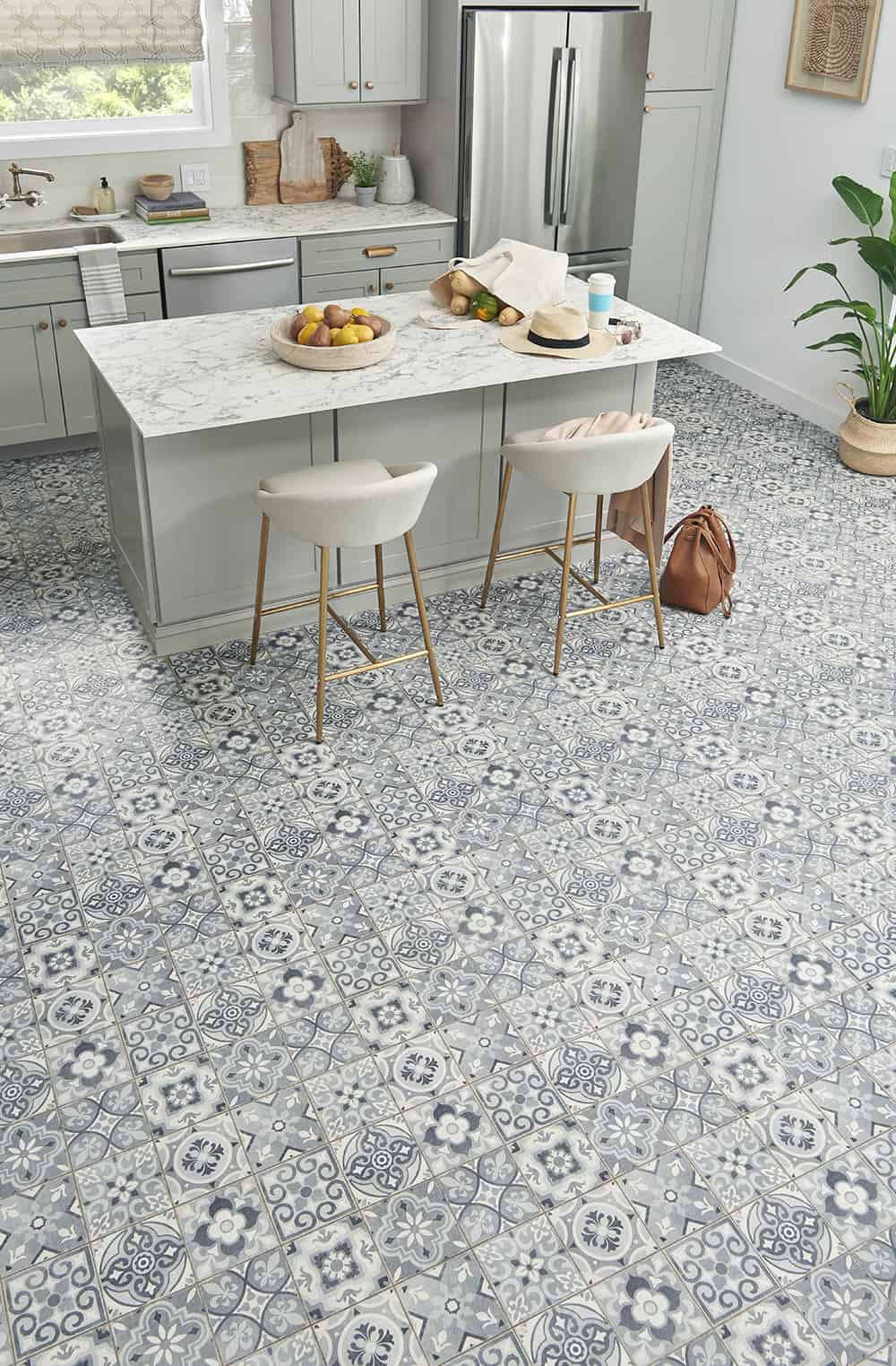
Traditional Vinyl Tile
Vinyl tile is made up of natural pulverized limestone, filler materials, thermoplastic binders, and colour pigments. These materials are fused together to create a solid sheet, which is then cut into tiles. Vinyl tile was the first popular form of vinyl, however sheet vinyl and luxury vinyl are now more common. While, vinyl tile is available in a variety of colours and patterns, compared to other types of vinyl, it does not offer as many texture and design options.
Peel and Stick Floor Tiles
Peel and stick floor tiles offer a convenient and budget-friendly option for transforming your space with vinyl flooring. These self-adhesive tiles are quick and easy to install, simply peel off the backing and stick the tiles onto a clean, flat surface. Peel and stick tiles come in a variety of designs, patterns, and colours, allowing you to customize your flooring to suit your style and preferences.
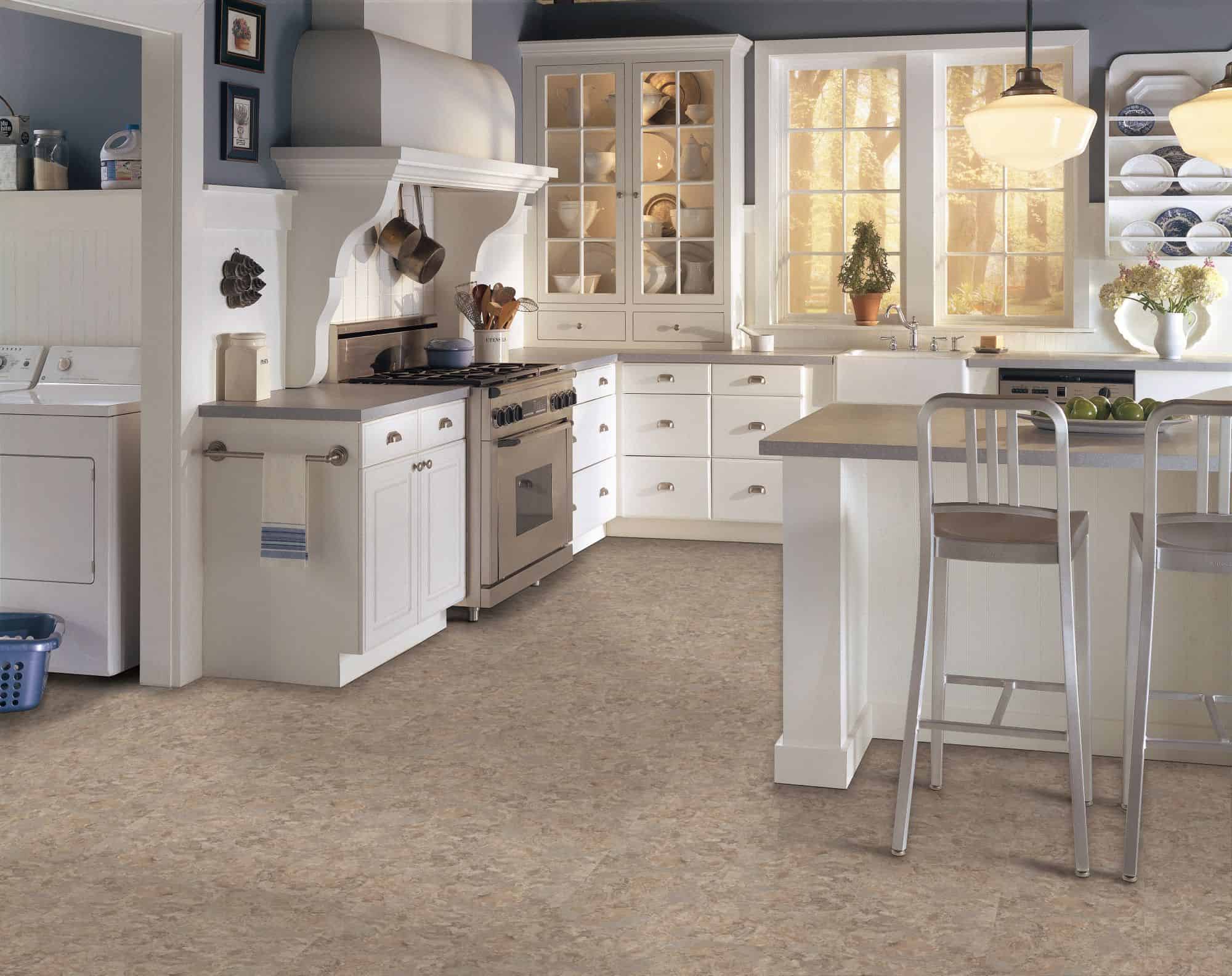
The Cost of Vinyl Flooring
Low-end vinyl can cost as little as $1.50 to $2.50 per square foot. Keep in mind that it likely will not perform as well as higher end vinyl. Cheap vinyl will not be as durable, low maintenance, or resistant to stains and everyday wear. High end vinyl will cost between $2.50 to $10 per square foot, installed.
Choosing the Right Vinyl Flooring for Your Home
Looking for expert advice on what types and style or vinyl flooring will be best for your home? Stop into your nearest Nufloors location and speak to one of our friendly flooring experts.


